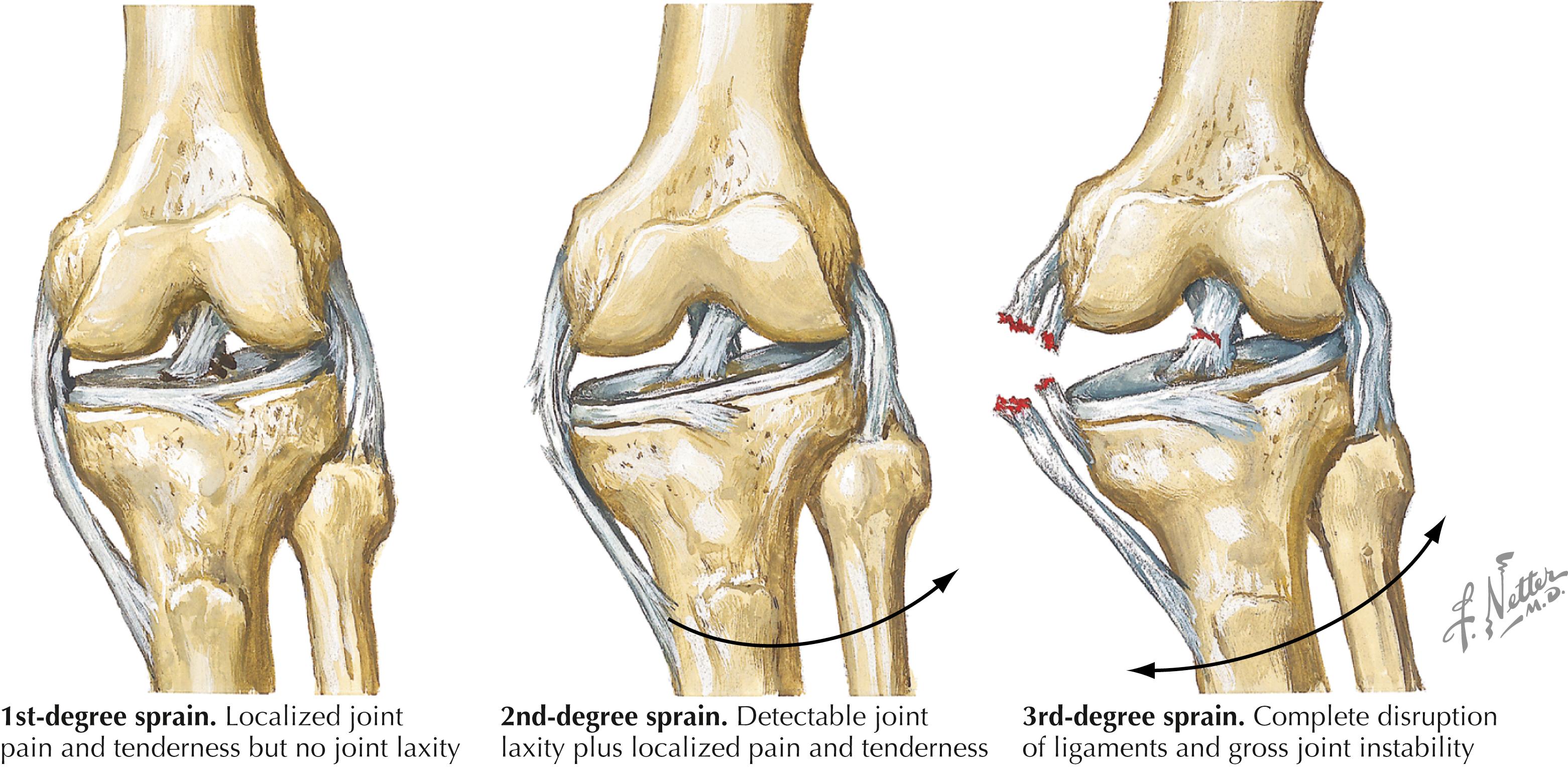Physical Address
304 North Cardinal St.
Dorchester Center, MA 02124
The authors would like to acknowledge the contributions of previous edition authors W. Michael Walsh, MD; Ronnie D. Hald, PT, ATC; Laura E. Peter, MD; and Morris B. Mellion, MD .
Musculoskeletal sports injuries can be classified as traumatic or overuse injuries.
Description: Result from specific episode(s) of trauma, whether recent (acute) or in the more distant past (subacute or chronic)
Description: Traumatic injury to a bone most commonly results in a fracture , although rarely, another injury such as subperiosteal hematoma can occur.
Descriptive terms:
Closed fracture is a fracture that does not produce an open wound in the skin.
Open fracture is when an open wound in the skin communicates with the fracture site.
Descriptive terms for direction of fracture line:
Fracture at right angles to the long axis of a bone is called transverse.
Fracture line at other angles to the long axis of a bone is called oblique.
Bone twisted apart creates spiral configuration of fracture.
Comminuted fracture is when a bone is broken into three or more pieces.
Avulsion fracture is a “pull-off” fracture; a piece of bone is pulled off by the ligament or by tendon attachment.
Greenstick fracture is an incomplete fracture in children: one side of a bone is broken, whereas the other side appears bent.
Torus fracture is localized buckling in the cortex of the bone, common in children.
Epiphyseal fracture is a fracture that involves the growth center at the end of a long bone in children.
Description: Traumatic injury to a joint and supporting structures (capsule or ligaments) often results in an instability episode referred to as dislocation or subluxation. Rarely, other results such as joint contusion or hemarthrosis occur from a direct blow.
Classification:
Dislocation is a complete displacement of joint surfaces so that they no longer make normal contact at all; important to distinguish first-time or recurrent dislocation
Subluxation is a partial displacement of joint surfaces, usually transient in nature; important to distinguish first-time or recurrent subluxation
Dislocation or subluxation implies damage to ligaments or other supporting structures of a joint; important to ascertain injury to those tissues; discussed in the following section
Description: Traumatic injury to a ligament is referred to as sprain ( Fig. 42.1 )

Classification:
First-degree sprain: Tear of only a few ligament fibers; mild swelling, pain, disability; no instability of joint created
Second-degree sprain: Tear of a moderate number of ligament fibers, but ligament function is still intact; however, ligaments may be somewhat stretched. Moderate amount of swelling, pain, disability; slight to no instability of joint.
Third-degree sprain: Complete rupture of a ligament; severe swelling and disability; definite joint instability; instability may be classified as:
1+ joint surfaces normally stabilized by ligament(s) displaced 3–5 mm from their normal position
2+ joint surfaces separated by 6–10 mm
3+ joint surfaces separated by >10 mm
Description: Traumatic injury to muscle or tendon caused by indirect force (i.e., contraction of muscle itself) is referred to as a strain
Classification:
First-degree strain: Tear of only a few muscle or tendon fibers; mild swelling, pain, disability; can also be characterized by patient’s ability to produce strong, but painful, muscle contraction
Second-degree strain: Disruption of moderate number of muscle or tendon fibers, but muscle–tendon unit still intact; moderate amount of pain, swelling, disability; characterized by patient’s weak and painful attempts at muscle contraction
Third-degree strain: Complete rupture of muscle–tendon unit; may be at origin, muscular portion, musculotendinous junction, within tendon itself, or at tendon insertion; characterized by extremely weak attempts at muscle contraction
Description: Traumatic injury to muscle caused by direct force may produce deep muscle contusion; typically affects quadriceps or brachialis muscles involved in contact or collision sports; may lead to myositis ossificans and therefore permanent loss of function
Become a Clinical Tree membership for Full access and enjoy Unlimited articles
If you are a member. Log in here